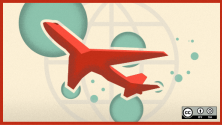Nearly two million babies would survive past their first month of life each year if they were simply kept warm. That's all. It's called thermal regulation, and all that means is keeping their environments warm so that their calories go to gaining weight and staying healthy instead of keeping their bodies warm.
Timothy Prestero, co-founder of Design that Matters and the related ThinkCycle initiative, spoke at LinuxCon 2010 on the open development of medical devices, in particular, DtM's role in creating open and usable incubators for babies in the developing world.
Design That Matters set out to address the infant death problem by creating a newborn incubator for the developing world. It had more requirements than such a project might in the developed world. The incubator needed locally available replacement parts. So DtM used the well-known language of automobile design and the worldwide auto industry supply chains to help create these locally maintainable incubators.
Why the need? With donated incubators, nothing is ever the same. It's probably whatever old model a hospital was getting rid of. Its labels could be written in a different language unknown to the users. In one case a 1950s-era GE incubator was still in use with cracked bedding and wires taped. Piles of broken incubators end up behind hospitals, perhaps because of a ten-cent part that they simply can't get.
This system is completely broken.
When a multinational medical company enters, what's the opportunity for them in an emerging market? The middle class in India is as big as the middle class in the USA. So they target the "diseases of affluence." Things like fertility problems.
DtM saw the opportunity and realized it had to be done for pennies on the dollar, which meant collaborative design.
Step 1: Define the problem.
The need for incubators--1.8 million newborn deaths. That's a huge number. And it's for a variety of needs, not just thermoregulation. So the problem had to be narrowed. Here's the result:
Doctors and nurses at "good" regional clinincs in developing countries need a locally serviceable isolette to assist in thermoregulation for low birth weight infants of 32 weeks or greater gestational age.
And that shows how much the problem had to be narrowed. For example, there is no provision of oxygen, which is much more critical for babies born before 32 weeks. So even though it was a tough choice, it was a line that had to be drawn.
Step 2: Use a lot of volunteers in the design process.
Professional volunteers from IDEO came. Students, other volunteers help do the research. Lots of field research and interpreting information about context and generating empathy.
Students in engineering have to do capstone projects or grad school projects. So DtM's competition in recruiting students is things like building a better skateboard or a great drink mixer. And yet, it's compelling for students to work on a project that saves lives. In one such relationship, DtM's project was the first time in 25 years that nobody dropped the course.
But altruism is a good way to get somebody to do something exactly once and students graduate and move on. So who else is out there?
Many contract and design firms can't keep their people busy all the time, so DtM asks for their "white space" time to work on these volunteer projects. They're often burned out from working on something less world-changing like snack packaging and are happy for the opportunity.
DtM is now working on other projects as well--a CPAP, light treament for jaundiced babies, cholera treatment. You can read more at designthatmatters.org.






Comments are closed.